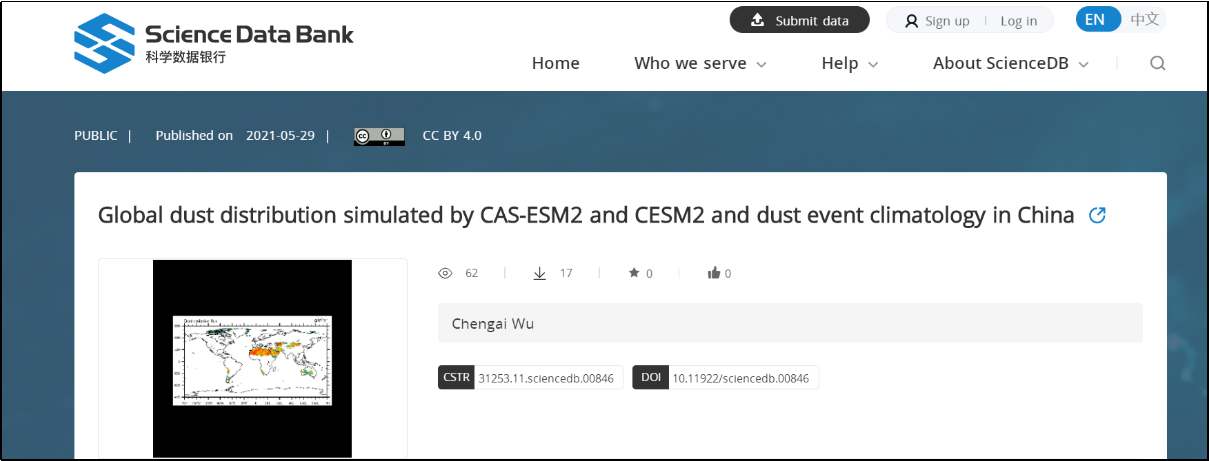Dr. Chenglai Wu released data on the distribution of global sand and dust fluxes, which provides simulations of global sand and dust emission fluxes, sediment fluxes, loads, and optical depths from September 1998 to August 2010 by two Earth system models (CAS-ESM2,) and community earth system model (CESM2), as well as statistics on the characteristics of dust events at China weather and weather stations.
Sand and dust are important factors influencing climate change. Sand dust aerosols
affect the Earth's radiation balance and energy balance by absorbing and scattering
solar radiation and long-wave radiation, thereby affecting climate change. On the
other hand, human activities such as climate change, land use, desertification, and
urbanization may all contribute to changes in the aerosols of mineral sand dust in the
atmosphere. Sand dust aerosols play a very important role in climate and
environmental change at the global and regional scales. The release of this dataset
provides important data support for environmental governance in countries along
the Belt and Road, especially in arid and semi-arid areas, and to address climate
change.
